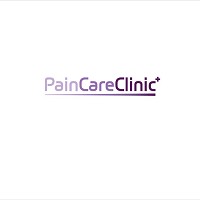TMJ (temporomandibular joint disorder)
TMJ, aka jaw pain, is a common condition that is poorly understood. Most people who come to us with TMJ have been diagnosed by their dentist or doctor. Their symptoms include:
- • Constant pain in the jaw, face, teeth, ears, and neck
- • Pain when moving the jaw; or clicking, grating, and popping sounds
- • Jaw locking open or shut
- • Headaches; buzzing or ringing in the ears (called tinnitus)
- • Sensitive (and broken or loose) teeth
- • Tingling and pain in the arms
- • Anxiety, depression and insomnia.
Commonly, the suggested causes are bruxism, which is teeth grinding and jaw clenching (which can be unconscious and stress-related), overuse (chewing gum), intensive dental treatment (cosmetic and otherwise), injury, disease (such as rheumatoid arthritis or Parkinsons), and the side-effects of medication (for example, anti-depressants). Rarely do those diagnosing TMJ consider posture.
Similarly, the medical and dental treatments that most clients have already experienced have focused on pain-killing medication, steroid injections, and Botox as a first resort; followed by mouthguards, splints, and then (further) surgery. People may also be advised to make ‘lifestyle changes’, such as eating a soft diet or avoiding yawning or singing.
Before you give up the food you love or activities that make you happy (a good yawn can be very satisfying), consider the role of posture. There may be other more obvious causes of jaw pain – in my experience dental surgery is the biggie – but for almost everyone posture plays a role.
Posture, fascia and TMJ
As a myofascial therapist, I start from the perspective that everything in the body is connected to everything else via a complex web of connective tissue that, when working correctly, distributes tension and yields fluidly to pain-free movement.
When closed, your jaw and teeth fit together to form your unique ‘bite’. Your bite is part of the postural web of connective tissue that holds your body in alignment right down to your feet. Your bite influences how your head sits on your cervical spine (neck). If your bite is out this creates a twist in the connective tissue that extends down your spine and into your pelvis. If your pelvis is out, then so too are your legs and feet. In addition, the misalignment in your cervical spine puts pressure on your arm nerves (which originate in the neck) causing pain and tingling in your arms and hands.
All this happens with your jaw closed and no movement. However, the jaw is a complex joint built to move in many directions allowing us to chew, swallow and speak. The main muscle of the jaw is the masseter (you can feel the masseter bulging when you clench your teeth). For its size, the masseter is the strongest muscle in the body so it’s unsurprising that as soon as jaw movement comes into play, postural forces intensify.
And this is all before we have factored in seemingly far-removed postural influences, such as an ankle sprain that affects gait; and work-related issues such as the forward head position that comes with too much computer work.
To learn more about how we can help with your TMJ or bruxism, contact us on 0330 041 7271 or info@paincareclinic.co.uk.





